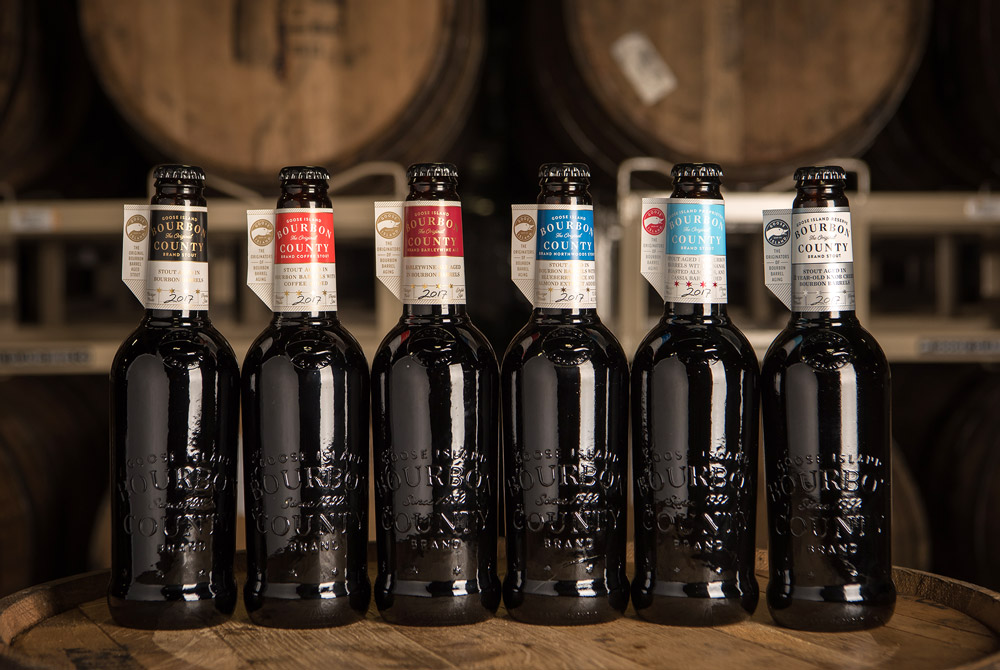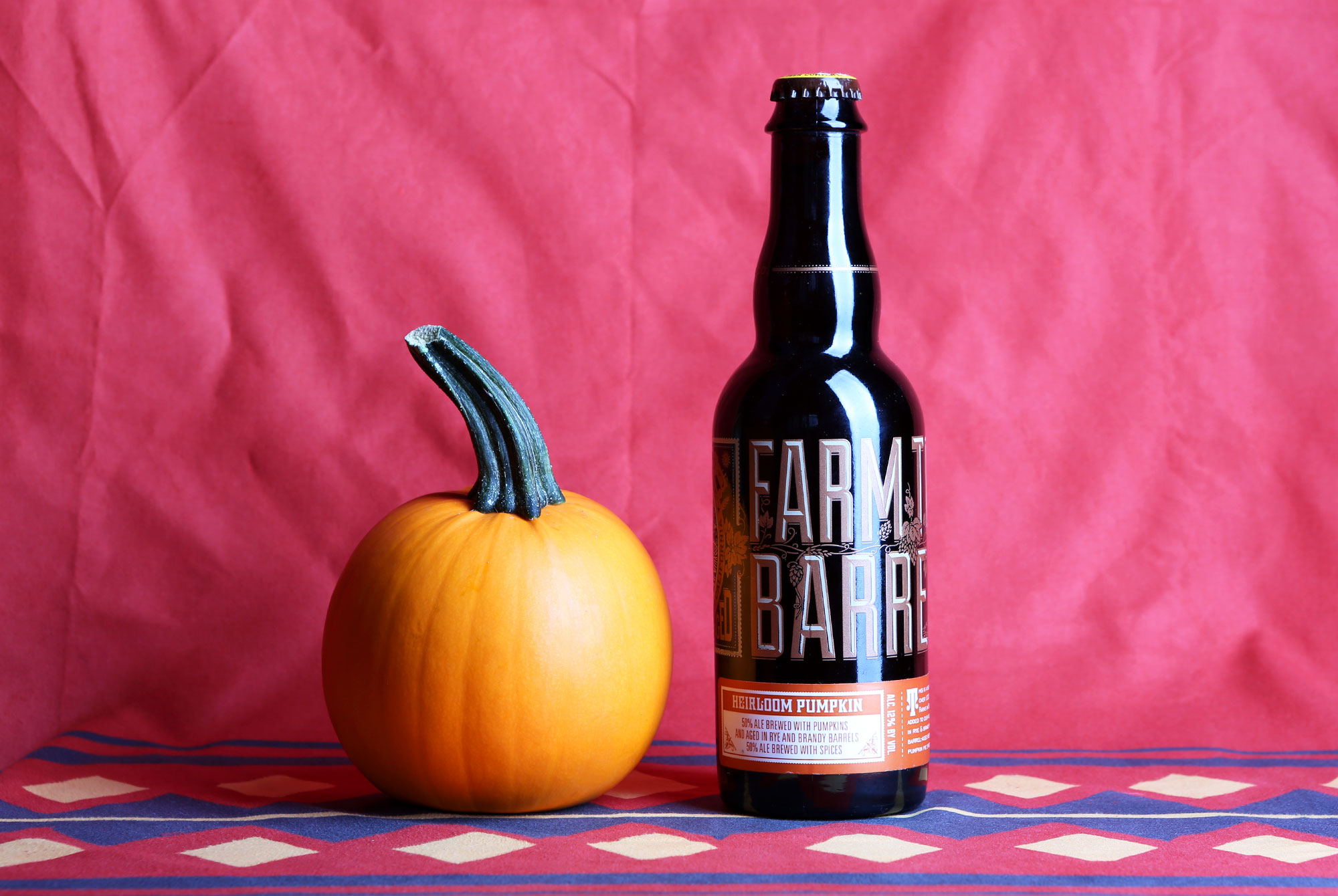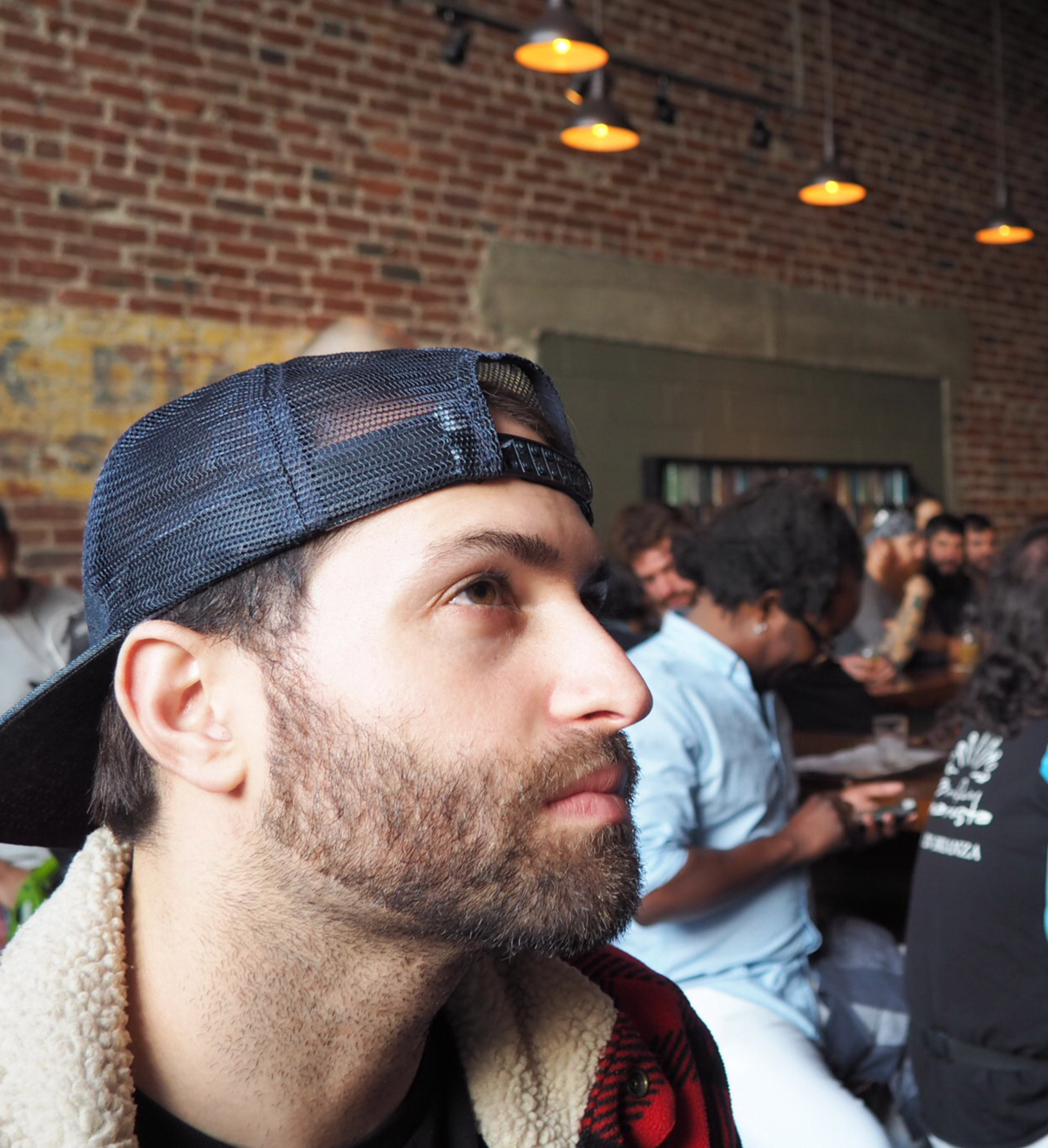Shop
Is Bourbon County Back?
Tasting the entire 2017 series with brewmaster Jared Jankoski.
It’s that time of the year again for beer fans around the country. No, I don’t mean wading through herds of people outside your local mall, dreaming of the doppelbock awaiting you back home once you’re through with holiday shopping. I’m referring to the early morning (and sometimes overnight) wait for Bourbon County. 2017 is an interesting year for the beer: The incidences of infections in 2015, and the withheld variants in both 2016 and 2017 have left many, including myself, questioning whether the series that once owned the fall could ever be the same again.
Last week I had the opportunity to sit down with brewmaster Jared Jankoski and his team from Goose Island to try each of the beers from this year’s release. So how do the beers taste? Let’s get into this year’s brews.
Bourbon County Reserve Aged in Knob Creek Barrels
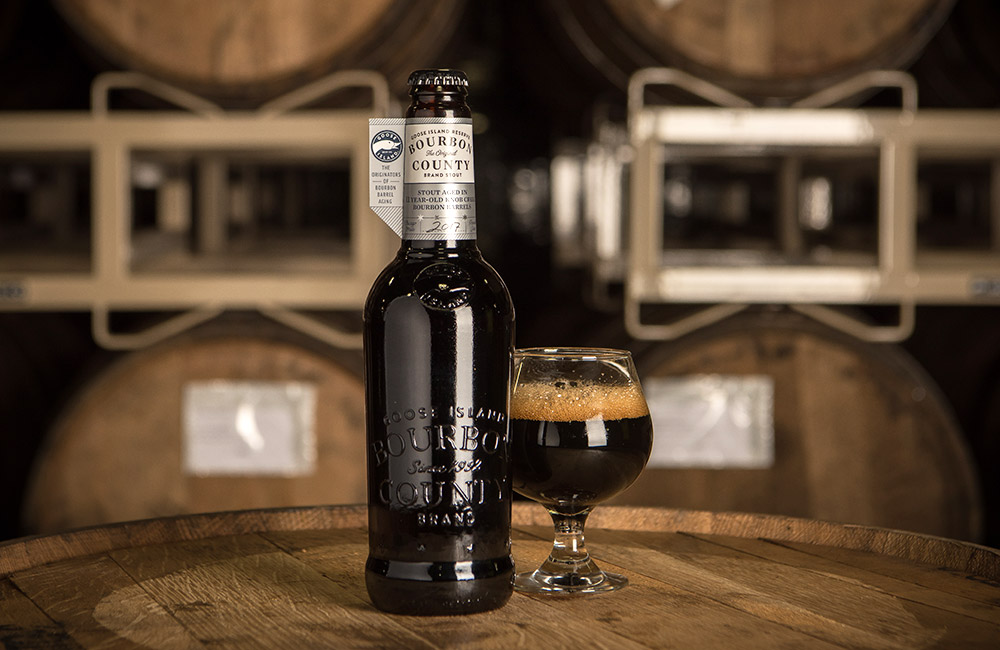
The winner for this year’s Bourbon County series is Reserve. Unlike the other variants, which were aged in freshly dumped Heaven Hill barrels, this beer is aged in 11-year-old Knob Creek barrels. If I were to describe the characteristics of my ideal Bourbon County Stout, it would be this beer. It’s incredibly balanced; there are notes of vanilla and chocolate, and a lingering bourbon character that’s reminiscent of some of my favorite vintages of Bourbon County Stout. While the other variants need to take their time to breathe, this one is prime for drinking right when you pop the cap. Like with all Bourbon County beers, people will want to age this, but I’m not too sure it will really improve much with age. Cheers to Fred Noe and the Knob Creek family — this is certainly a beer Booker would be proud of.
Bourbon County Proprietor’s
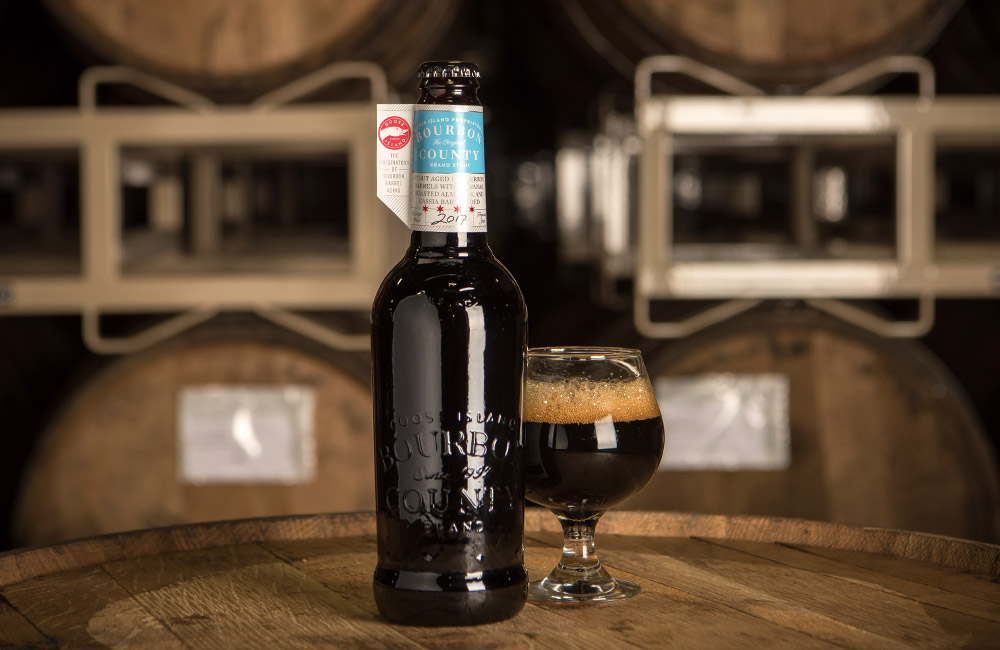
A Banana Fosters inspired stout for this year’s Prop? I don’t think I was the only one that hoped this was a joke when I first heard the announcement. But somehow brewer Quinn Fuechsl, the creator behind this variant, actually makes this beer work. If you’re expecting a big fruity stout, you’re going to be disappointed. Instead it’s the complementing taste of banana that makes this beer work. It reminded me of 2014 Prop, which of course didn’t have the fruit — but it did have Cassia Bark, which completely overtakes the beer, creating an uncanny resemblance. When I asked Fuechsl whether this was intentional, he noted that the influence of Cassia Bark was in fact based on the 2014 variant. “We looked at Prop ’14, and I wanted to dial that cinnamon character back a bit,” he said. “So we used the dosing from that variant to guide the cinnamon character infusion into this year’s.”
Bourbon County Barleywine
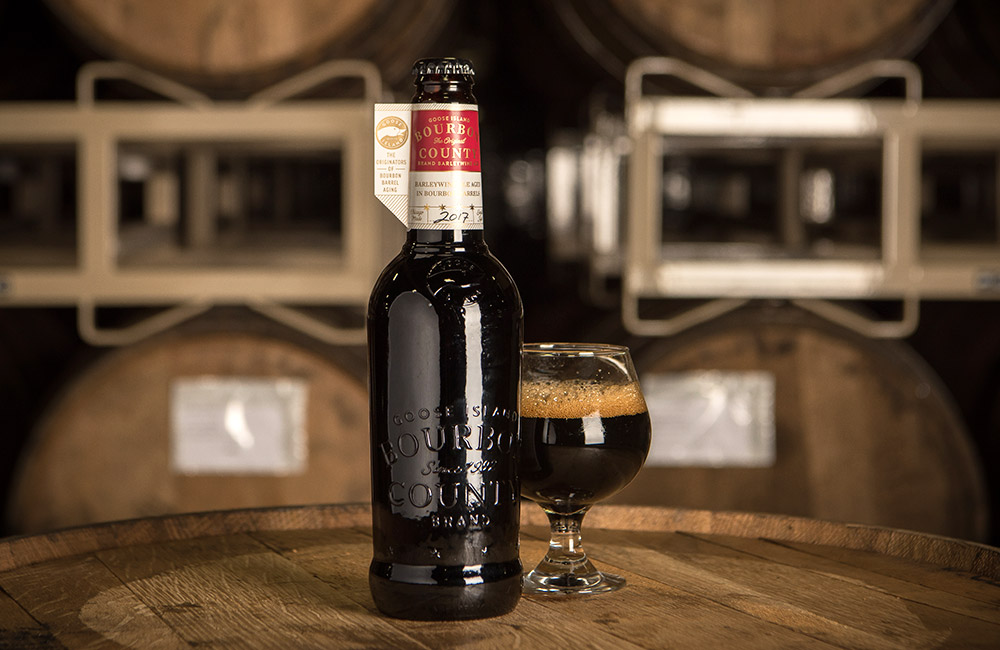
While it wasn’t my favorite for this year’s series, it’s always nice when a beer comes back to life (especially when that beer is life). Jankoski noted that in the past, barleywine variants were made using barrels that were “a mix of second- and third-use to get the character we wanted from the bourbon barrels. But the idea was a hunch based on our experience with King Henry.” This year, Goose decided to go with second-use barrels to get the prominent bourbon character. Some may say the fresh barrels make the body feel a little thinner, but I actually enjoyed the change compared to the last two years. The beer is sweet and sticky, flowing with notes of toffee, caramel, and raisins. Unlike most of the variants, zero heat comes through on the beer; instead, there’s a lovely smell of rich bourbon notes with a lingering barrel character. It was hard not to sit there smiling like an idiot at the rich mahogany color in the glass. It’s not 2013 or 2014, but it’s certainly my favorite since. While the loss of King Henry 2.0 will hurt, this beer will have to do for now.
Bourbon County Coffee
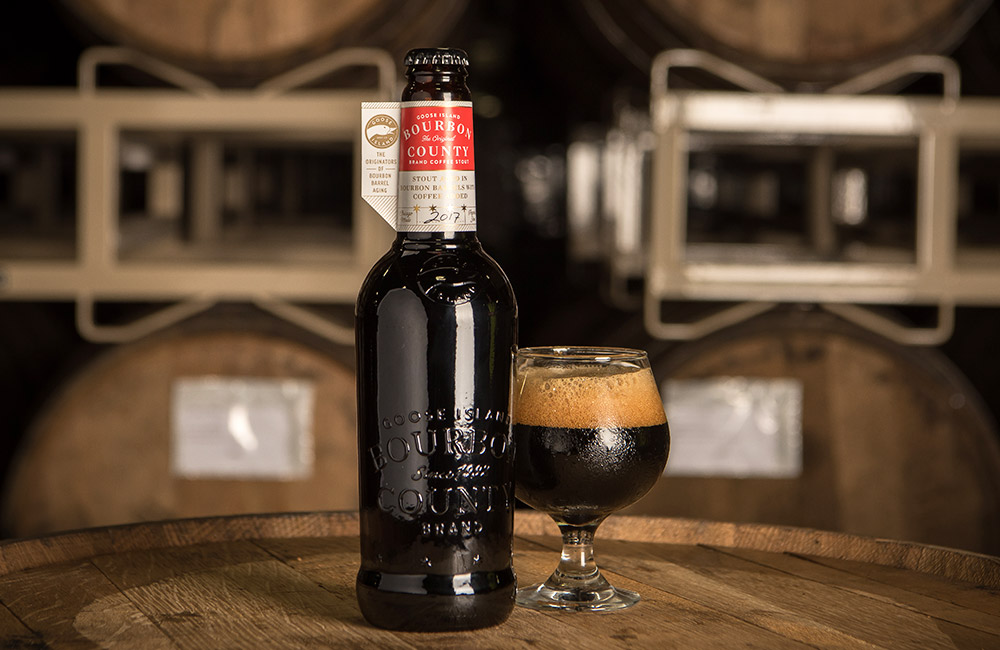
For this year’s Coffee variant, Jankoski and his team decided to take a page out of their previous releases and bring back an old friend. I wasn’t big on the fruit-forward coffee beans used for the last few years, so when I heard Goose was going back to Black Cat Espresso, I was quite pleased. Jankoski said that the decision to use Black Cat “had been considered for a few years, as many people really liked it. So I have kept it as an option in the event we weren’t able to settle on a clear choice. In this case, it was tasted blindly against other coffees, and we liked it best.” For those of you unfamiliar, Black Cat beans were used in the first iteration of Bourbon County Coffee back in 2010. This year, the nose and taste burst with rich roasted coffee notes. Some might shy away from the coffee as the fresh beans give way to a faint green pepper aroma on the nose. But this is definitely my favorite since 2014.
Bourbon County Regular
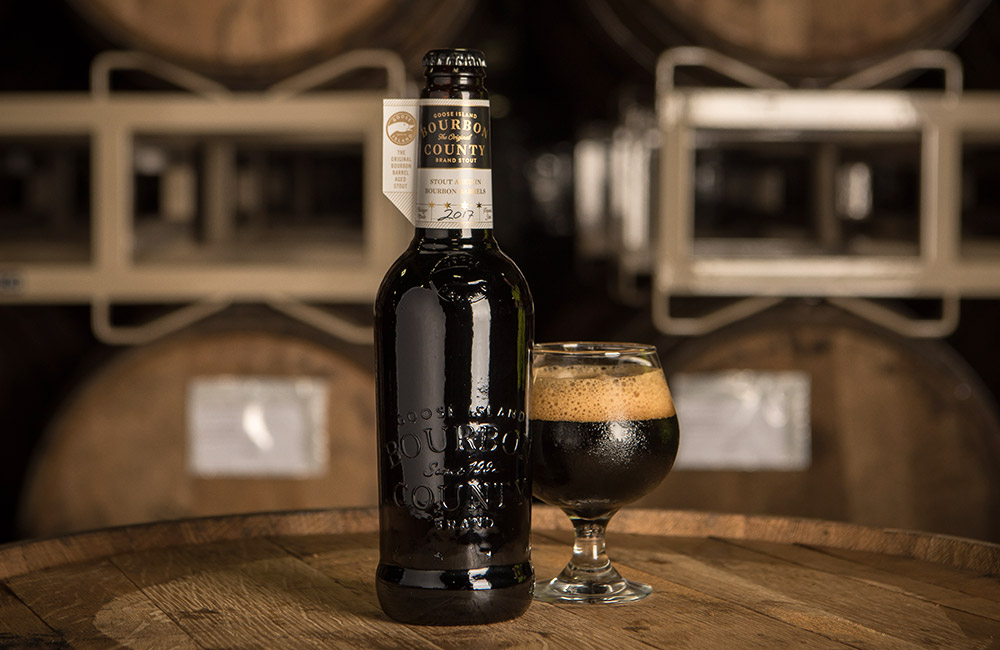
This year’s original Bourbon County Stout or BCBS threw me for a loop. Right out the gate there was a ton of heat, much more than the other variants, which are able to use their respective adjuncts to mask some of that upfront bourbon character. In this way the beer falls short of the best fresh vintages of the last few years. I would recommend letting it breathe a bit.
Chocolate dominates the the taste, and its lingering barrel character is little more muted compared to years past. It reminds me very much of the 2014 BCBS (with a little less body), which also came out the gate with an intense bourbon character, and needed a year or two until we truly knew what we were getting. The Goose Island folks mentioned that they were looking at the 2013 BCBS barrel character with this year’s version, so we can hold out hope that once the heat dies down, it could develop into something close to a favorite BCBS.
Bourbon County Northwoods Stout
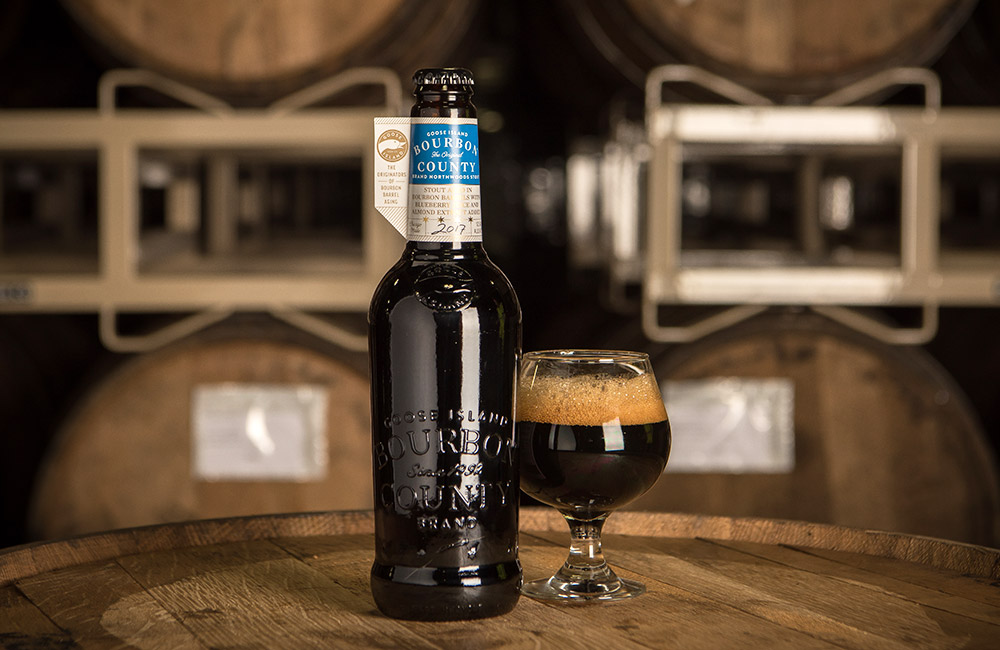
This will be the most polarizing beer of the series. While it was my least favorite, others around me called it the top beer. As I mentioned earlier, I’m not a big fan of fruited stouts; there are alway exceptions to that rule, all of which have come from previous series, such as Backyard Rye. Backyard, a 2014 release, had an incredible interplay of chocolate, jam, and a smooth barrel character right from the start. This is where Northwoods is a miss for me. The blueberry is just too overwhelming, taking over the palate with the almond extract following on the backend. It’s by no means a bad beer — it’s just something I wouldn’t want more than a few ounce of. Perhaps over time, the blueberry becomes a little less intense, and gives way to a more balanced, special beer.
Jason Stein is one of our new beer nerds. You can follow him on Instagram at @Nycbeersociety.

